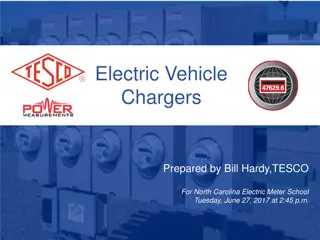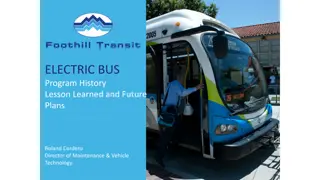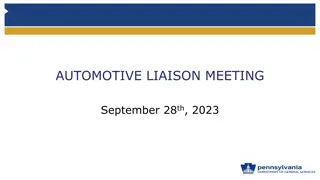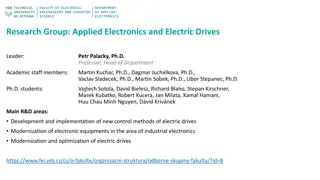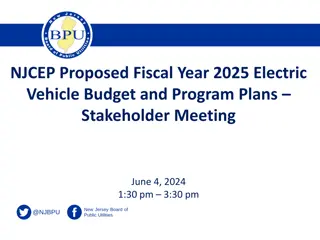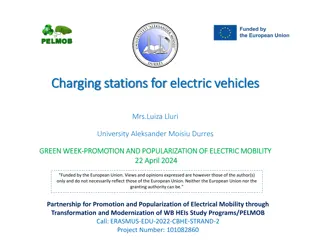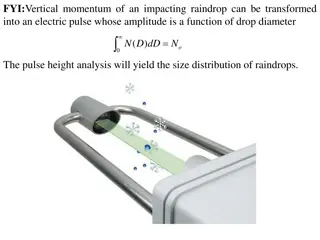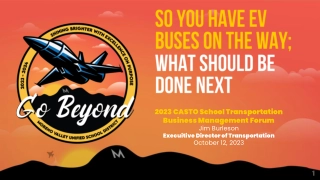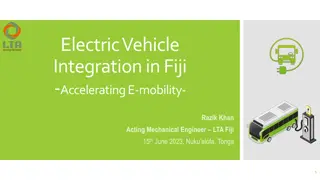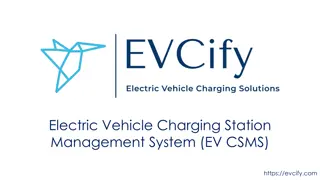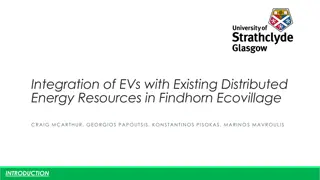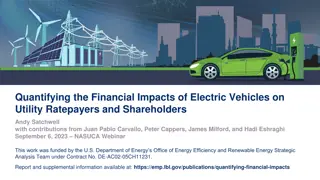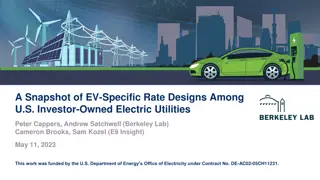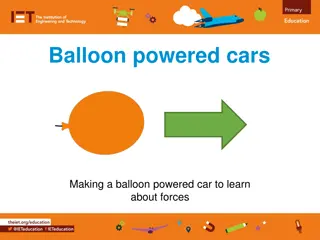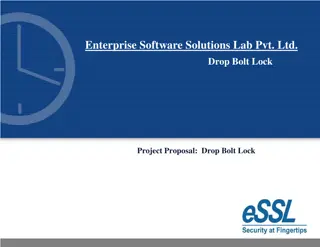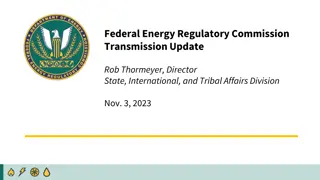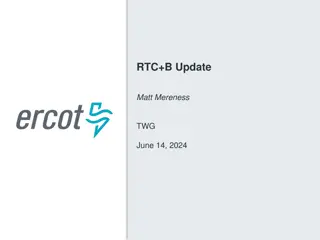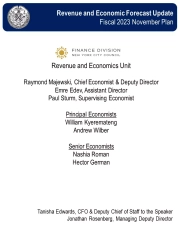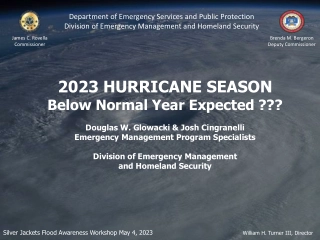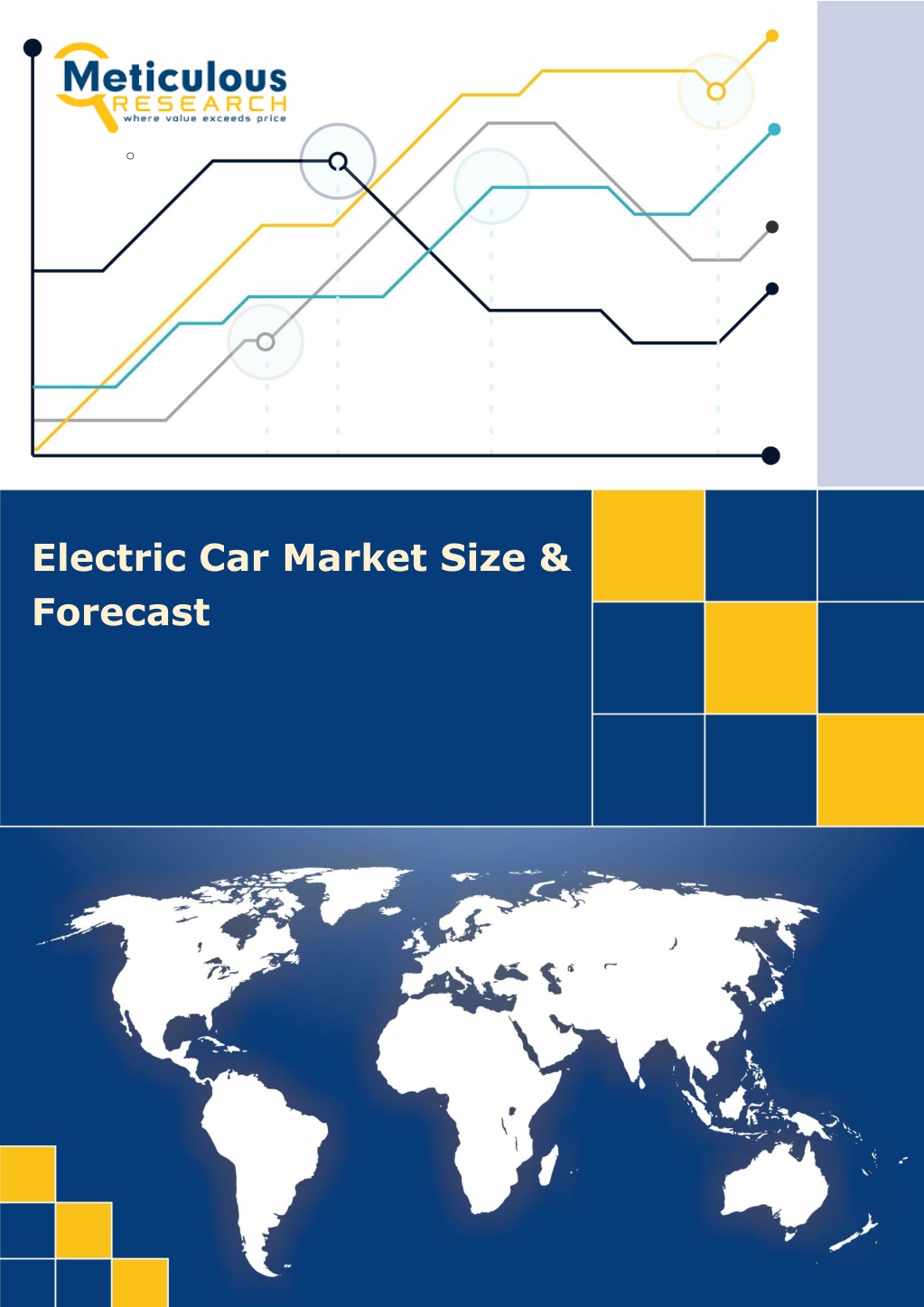
Electric Car Market Size & Forecast
Electric Car Market Size, Share, Forecast, & Trends Analysis by Propulsion Type (BEV, FCEV, PHEV, HEV), Power Output (Less than 100 kW, 100 kW to 250 kW, and More than 250 kW), and End Use (Private Use and Commercial Use) - Global Forecast to 2031n
Download Presentation
Please find below an Image/Link to download the presentation.
The content on the website is provided AS IS for your information and personal use only. It may not be sold, licensed, or shared on other websites without obtaining consent from the author. Download presentation by click this link. If you encounter any issues during the download, it is possible that the publisher has removed the file from their server.
Presentation Transcript
o Electric Car Market Size & Forecast
Global XXX Market 2024 - 2031 Meticulous Research a leading global market research company, published a research report titled, Electric Car Market by Propulsion Type (BEV, FCEV, PHEV, HEV), Power Output (Less than 100 kW, 100 kW to 250 kW, and More than 250 kW), End Use (Private Use and Commercial Use), and Geography - Global Forecast to 2031. The electric car market is poised for substantial growth over the coming years, with projections indicating a market size of $5,634.6 billion by 2031, growing at a CAGR of 29.2% from 2024 to 2031. In terms of volume, the market is expected to reach 140.7 million units by 2031, expanding at a CAGR of 27.7% during the same period. Several factors drive this growth, including supportive government policies, significant investments from automotive OEMs, rising environmental concerns, and decreasing battery prices. Additionally, the adoption of autonomous driving vehicles and the focus on electric mobility in emerging economies offer considerable opportunities for market players. Electric Car Market Growth Drivers Supportive Government Policies and Regulations I. Governments worldwide are increasingly implementing policies to encourage the adoption of electric vehicles (EVs). These policies include financial incentives like tax credits and rebates, which help reduce the upfront cost of electric cars, making them more affordable. For example, in June 2023, the Chinese government set ambitious targets to establish a comprehensive charging infrastructure system by 2030 to support the new-energy vehicle industry and achieve carbon neutrality. Similarly, the Canadian government proposed regulations in December 2022 to set zero-emission vehicle (ZEV) sales targets for manufacturers and importers of new passenger cars, SUVs, and pickup trucks. These initiatives aim to reduce monthly expenses for families amidst rising oil prices. In July 2022, the Government of Chhattisgarh in India announced an electric vehicle policy to create robust EV charging infrastructure, accelerate the transition from internal combustion engine vehicles to EVs, and incentivize EV manufacturing. Such supportive policies and initiatives are expected to further boost the growth of the electric car market during the forecast period. II. Decreasing Prices of Batteries Battery prices have significantly decreased, making electric vehicles more affordable. According to BloombergNEF s annual lithium-ion battery price survey, average pack prices fell to INR 139 per kilowatt hour in 2023, a 14% drop from INR 161/kWh in 2022. This reduction in battery costs coincides with technological advancements, leading to increased energy density and longer driving ranges for EVs. Page 1 of 5 Meticulous Research| sales@meticulousresearch.com
Global XXX Market 2024 - 2031 Longer-range batteries mitigate range anxiety, a common concern among potential EV buyers, making electric cars more appealing to a broader market. These cost reductions also encourage innovation in battery technology and manufacturing processes, further driving the adoption of electric cars. Growing Adoption of Autonomous Driving Vehicles The adoption of autonomous vehicles presents significant growth opportunities for the electric car market. Autonomous vehicles, which include self-driven or driverless vehicles, use advanced technologies like artificial intelligence (AI), light detection & ranging (LiDAR), computer vision, GPS, and RADAR sensing technology to operate with minimal human intervention. These vehicles can enhance transportation and logistics efficiency while reducing carbon emissions Several automotive manufacturers are actively working on incorporating autonomous driving capabilities in their electric cars. For instance, in January 2024, Nvidia Corporation announced that Li Auto Inc. selected the NVIDIA DRIVE Thor centralized car computer for its next-generation fleets. Similarly, Great Wall Motor Co., Ltd., Zhejiang Zeekr Intelligent Technology Co., Ltd., and Xiaomi Corporation adopted the NVIDIA DRIVE Orin platform to power their intelligent automated-driving systems. These advancements are expected to significantly boost the electric car market. Electric Car Market Challenges Low Cold Weather Performance of Electric Cars Electric vehicles tend to perform less efficiently in cold weather, which can reduce their range and overall efficiency. Low temperatures slow down the chemical reactions within the battery, leading to decreased energy output. This can contribute to range anxiety among electric vehicle owners, particularly during long trips or in regions with harsh winter conditions. However, ongoing advancements in battery technology and vehicle design are improving cold-weather performance and reducing range anxiety. With proper planning and the availability of charging infrastructure, EV owners can manage the impact of cold weather on their vehicles effectively. Range Anxiety among Consumers Range anxiety, the fear that an EV s battery will run out of power before reaching a charging station, remains a significant concern for potential EV buyers. Publicly accessible fast chargers that facilitate longer journeys can help overcome this anxiety. Countries worldwide are expanding their EV charging networks to address this issue. For example, in February 2023, over 40% of publicly available charging units in China were fast chargers, driven by government subsidies and active infrastructure development by public utilities. Continued Page 2 of 5 Meticulous Research| sales@meticulousresearch.com
Global XXX Market 2024 - 2031 improvements in battery technology, charging infrastructure, and consumer education are expected to alleviate range anxiety and encourage more people to adopt electric cars. Electric Car Market Analysis: Key Findings By Propulsion Type: Hybrid Vehicles Segment to Dominate in 2024 Based on propulsion type, the electric car market is segmented into battery electric vehicles, hybrid vehicles, and fuel cell electric vehicles. The hybrid vehicles segment, which includes plug-in hybrid electric vehicles and pure hybrid electric vehicles, is expected to account for the largest share of above 66.8% of the market in 2024. The segment's growth is attributed to stringent automotive emission regulations, consumer demand for high fuel efficiency vehicles, increased investments by automotive OEMs in hybrid powertrains, and the lower cost of hybrid vehicles compared to battery electric vehicles. However, the fuel cell electric vehicles segment is anticipated to register the highest CAGR during the forecast period, driven by advantages such as fast refueling, zero tailpipe emissions, lighter and smaller battery packs, increased driving range, government initiatives for hydrogen fuel cell charging stations, and investments in hydrogen fuel cell technology. By Power Output: Less Than 100kW Segment to Lead in 2024 Based on power output, the electric car market is segmented into less than 100kW and 100kW to 250kW. In 2024, the less than 100kW segment is expected to hold the larger share of above 83.2% of the market. The growth is attributed to the increasing use of light electric cars in major cities, the implementation of electric cars for shared mobility services, falling battery prices, and investments in electric vehicle startups in this segment. The 100kW to 250kW segment is expected to register the highest CAGR during the forecast period, driven by initiatives from leading automotive OEMs to launch more powerful electric cars, regulations to reduce tailpipe emissions, and the adoption of electric cars in developed economies. By End Use: Private Use Segment to Dominate in 2024 Based on end use, the electric car market is segmented into private use and commercial use. In 2024, the private use segment is expected to account for the larger share of above 86.2% of the market, driven by consumer demand for fuel-efficient and zero-emission vehicles, government incentives, tax rebates, declining battery costs, and rising fuel prices. The commercial use segment is anticipated to register the highest CAGR during the forecast period, driven by the use of electric cars in shared mobility services, corporate taxi fleets, regulations to reduce fleet emissions, growing adoption of mobility-as-a-service (MaaS), and rising fuel prices. Page 3 of 5 Meticulous Research| sales@meticulousresearch.com
Global XXX Market 2024 - 2031 Geographical Analysis Asia-Pacific to Dominate the Electric Car Market in 2024 Asia-Pacific is expected to hold the largest share of above 41.9% of the electric car market in 2024. The region's growth is driven by the demand for EVs and charging facilities, numerous startups offering solutions in electric mobility, attractive incentives for EV buyers, and the manufacturing and technological competencies of countries like China, Japan, South Korea, and India. Download @https://www.meticulousresearch.com/download-sample-report/cp_id=5187 Sample Report Here Key players in this region are collaborating to promote, regulate, and invest in the EV industry. For instance, in January 2023, Tata Motors Limited partnered with ICICI Bank Ltd to offer EV Dealer Financing to authorized EV dealers. In March 2022, BYD Company Ltd. signed a deal to supply 10,000 electric taxis to Shenzhen and planned to invest USD 1.5 billion in a new factory for Es and batteries. Europe to Register the Highest CAGR during the Forecast Period Europe is expected to register the highest CAGR of 41.8% during the forecast period, driven by stringent emission regulations, efforts to reduce conventional cars, an extensive charging infrastructure network, and investments in sustainable road transport infrastructure. Norway and Sweden are leading the charge in promoting EV adoption, with Sweden constructing the first electrified road for en-route EV charging in May 2023. This initiative and plans to electrify an additional 3,000 kilometers of roads by 2035 are expected to boost the demand for electric mobility in the region. Key Questions Answered in the Report: What are the high-growth market segments in terms of propulsion type, power output, and end user? What is the historical market size for the electric car market? What are the market forecasts and estimates for 2024 2031? What are the major drivers, restraints, opportunities, challenges, and trends in the electric car market? Who are the major players in the electric car market, and what are their market shares? What is the competitive landscape like? What are the recent developments in the electric car market? Page 4 of 5 Meticulous Research| sales@meticulousresearch.com
Global XXX Market 2024 - 2031 What are the different strategies adopted by major market players? What are the trends and high-growth countries? Who are the local emerging players in the electric car market, and how do they compete with other players? Contact Meticulous Email- sales@meticulousresearch.com Contact Connect with us on LinkedIn- https://www.linkedin.com/company/meticulous-research Us: Research Sales- +1-646-781-8004 Page 5 of 5 Meticulous Research| sales@meticulousresearch.com

